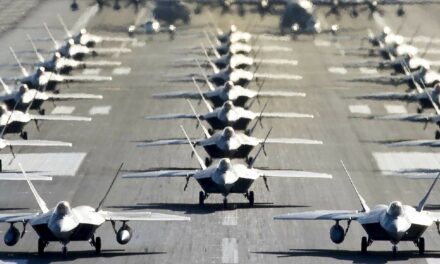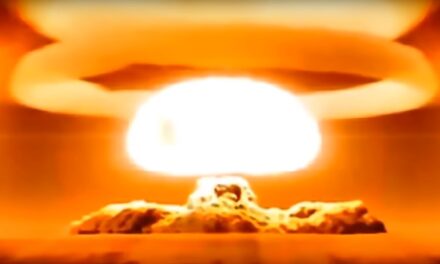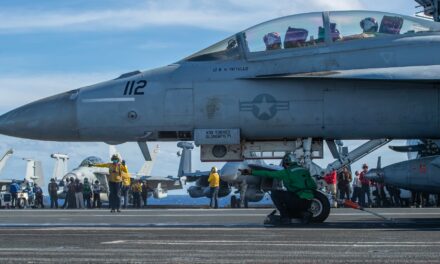We support our Publishers and Content Creators. You can view this story on their website by CLICKING HERE.
Key Facts: The U.S., France, and UK have lifted restrictions on Ukraine’s use of Western-supplied long-range munitions against targets within Russia, initially limited to Russia’s Kursk Oblast.
ATACMS firing back in 2006. Image Credit: U.S. Army.
This marks a significant shift, granting Ukraine access to its most advanced precision-strike weapons, such as HIMARS, ATACMS, and Storm Shadow missiles, to target key Russian military and logistical hubs.
Despite North Korea’s deployment of 11,000 troops to support Russian forces in Kursk, Ukrainian advances remain steadfast. Analysts suggest that expanding the strike permissions to cover all of Russia could enable Ukraine to cripple Russia’s logistical and operational capabilities across hundreds of high-value targets, potentially shifting the conflict’s trajectory.
Western Long-Range Missiles Transform Ukraine’s War Efforts
Last week, the United States, France, and the United Kingdom finally permitted Ukraine to use Western-supplied long-range munitions – its most powerful weapons – against targets within Russia.
Until last week, out of concerns of further escalation, the U.S. and its Western partners had forbidden Ukraine from using Western-provided munitions against targets within Russia. As such, the Ukrainian military could only use these weapons to strike targets within Ukraine and had to resort to its own homegrown systems against targets inside Russia.
After Ukraine’s advance in Kursk, the Kremlin reached an agreement with North Korea for approximately 11,000 North Korean troops to arrive in the region and help push the Ukrainians back. Thus far, they have had little success and the Ukrainian salient remains firmly in place. However, in response to their deployment, Ukraine – after months of requests – finally received permission to use its precision strike weapons against Russia.
The precision strike capabilities that Ukraine has available come mainly from the M142 High Mobility Artillery Rocket System (HIMARS), M270 Multiple Launch Rocket System, M982 Excalibur 155mm GPS-guided artillery shell, MGM-140 Army Tactical Missile System (ATACMS), and Storm Shadow and SCALP-EG air-launched cruise missiles.
Now, hundreds of targets inside Russia have become available to these weapons.
A new palette of targets
To begin with, the Ukrainian military only has permission to use Western munitions against targets inside the Kursk Oblast in Russia.
According to a report by the Institute for the Study of War, the Ukrainian military can now strike the 597th Special Motorized Internal Troops Regiment, FSB Department for the Kursk Oblast, 2nd Operational Detachment GRU, 3754th Central Aviation Technical Base, 27th NBC Protection Brigade, Air Base Kursk Vostochmy, 14th Fighter Aviation Regiment, 53rd Anti-Aircraft Missile Brigade, and 448th Missile Brigade. All these are fixed, pre-identified targets.
Further, the concentration of troops and resources inside Kursk presents additional, fluid targets of opportunity.
If the U.S. and its allies allow Ukraine to strike targets across Russia and not just Kursk Oblast, there are hundreds of available targets within range (approximately 245 targets across Russia).
These targets vary in nature and include different capabilities. For example, in range of Ukrainian munitions are logistical centers and units and bases of conventional troops, special operations units. These include the 22nd Separate Guards Spetsnaz Brigade, 39th Separate Railway Brigade, 1061st Logistics Center, 338th Radio-Technical Regiment, 11th Coastal Missile-Artillery Brigade, 132nd Command Intelligence Center GRU, 150th Motor Rifle Division HQ, 16th Separate EW (Electronic Warfare) Brigade, 214th Missile Regiment, 31st Guards Fighter Aviation Regiment, 4th Air and Air Defense Forces Army HQ.
The Ukrainian military now needs enough munitions to inflict heavy costs on the Russian logistical system and cut its supplies to the frontlines. Then, it needs permission to continue its strikes outside the Kursk Oblast.
About the Author
Stavros Atlamazoglou is a seasoned defense and national security journalist specializing in special operations. A Hellenic Army veteran (national service with the 575th Marine Battalion and Army HQ), he holds a BA from the Johns Hopkins University, an MA from the Johns Hopkins’ School of Advanced International Studies (SAIS), and is pursuing a J.D. at Boston College Law School. His work has been featured in Business Insider, Sandboxx, and SOFREP. This first appeared in Sandboxx News.

 Conservative
Conservative  Search
Search Trending
Trending Current News
Current News 





